
::: Unique Density & Concentration Meters
DMA 35
Portable Density/Specific Gravity/
Concentration Meter
Instruction Manual | Betriebsanleitung
Anton Paar
®
GmbH
Anton-Paar-Str. 20
A-8054 Graz
Austria - Europe
Tel: +43 (0)316 257-0
Fax: +43 (0)316 257-257
E-mail: info@anton-paar.com
Web: www.anton-paar.com
Instruments for:
Density & concentration
measurement
Rheometry & viscometry
Sample preparation
Microwave synthesis
Colloid science
X-ray structure analysis
Refractometry
Polarimetry
High-precision temperature
measurement
Specifications
subject to change
without notice


C96IB01 3
EN
DMA 35
Portable Density Meter
From Firmware Version V1.79
Instruction Manual

4 C96IB01
EN
While every precaution has been taken in the preparation of this document, Anton
Paar GmbH assumes no responsibility for technical or printing errors or omissions.
Nor is any liability assumed for damages resulting from the use of the information
contained in this instruction manual. Anton Paar GmbH does not make a commitment
to update the information in this manual. Specifications are subject to change without
notice.
All rights reserved (including translation). No part of this document may be translated,
reproduced or distributed in any form (print, photocopy, microfilm or any other
process) without the prior written permission of Anton Paar GmbH. Trade marks may
be used in this instruction manual without being marked as such. These are the
property of their respective owners and are legally protected.
Published by Anton Paar GmbH. Printed in Austria. Copyright © 2009 Anton Paar
GmbH, Graz, Austria
Contact: Anton Paar GmbH
Anton-Paar-Str. 20
A-8054 Graz / Austria - Europe
Tel: +43 316 257-0
Fax: +43 316 257-257
E-mail: info@anton-paar.com
Web: www.anton-paar.com
Date: December 22, 2009
Document number: C96IB01C.fm

C96IB01 5
EN
Contents
1 About the Instruction Manual ..........................................................................8
2 Safety Instructions ..........................................................................................10
3 Measuring Principle ........................................................................................12
4 DMA 35 - an Overview ....................................................................................13
5 Checking the Supplied Parts .........................................................................14
6 Description of the Instrument ........................................................................17
6.1 Front View ................................................................................................17
6.2 Rear View ................................................................................................19
6.3 Display .....................................................................................................20
7 Operating the DMA 35 .....................................................................................22
7.1 Connecting the Filling Tube .....................................................................22
7.2 Attaching the Syringe Adapter .................................................................22
7.3 Switching the Instrument On ....................................................................23
7.4 Switching the Instrument Off ....................................................................23
8 Defining the Basic Settings ............................................................................24
8.1 Language Settings ...................................................................................24
8.2 Units .........................................................................................................24
8.3 Sound Settings .........................................................................................24
8.4 Energy Saving Mode ................................................................................24
8.5 Backlight ..................................................................................................25
8.6 Contrast Settings .....................................................................................25
8.7 Allocation of the Softkey Function ............................................................26
8.8 Password Protection ................................................................................26
8.9 Date and Time Settings ...........................................................................27
8.10 Exporting the System Settings to a PC ....................................................28
9 Performing a Measurement ............................................................................29
9.1 Selecting the Measuring Unit ...................................................................30
9.1.1 Categories of Measuring Units .........................................................31
9.1.2 Calculating a Temperature Coefficient .............................................32

6 C96IB01
EN
9.1.3 Importing Custom Functions .............................................................33
9.2 Selecting Measuring Methods ..................................................................34
9.2.1 Entering a New Method ....................................................................34
9.2.2 Entering Method Lists .......................................................................35
9.2.3 Editing a Method ...............................................................................37
9.2.4 Deleting a Method ............................................................................37
9.2.5 Deleting all Methods .........................................................................37
9.2.6 Selecting a Method ...........................................................................38
9.3 Assigning a Sample ID .............................................................................38
9.3.1 Entering the Sample ID ....................................................................38
9.3.2 Entering Sample ID Lists ..................................................................39
9.3.3 Changing the Sample ID ..................................................................41
9.3.4 Deleting a Sample ID ........................................................................41
9.3.5 Deleting all Sample IDs ....................................................................41
9.3.6 Selecting a Sample ID ......................................................................41
9.4 Selecting the Measurement Mode ............................................................42
9.5 Using the RFID Function (Only for Versions with RFID Interface) ...........42
9.5.1 Preconditions for Using RFID ...........................................................42
9.5.2 Allocating RFID Tags ........................................................................43
9.5.3 Programming RFID Tags ..................................................................44
9.5.4 Erasing RFID Tags ...........................................................................44
9.5.5 Reading RFID Information ................................................................45
9.5.6 Selecting a Method and/or Sample ID via RFID ...............................45
9.5.7 Application Examples for RFID .........................................................46
9.6 Filling Sample ...........................................................................................47
9.6.1 Filling Using the Filling Tube ............................................................47
9.6.2 Filling with the Plastic Syringe ..........................................................48
9.7 Performing a Measurement ......................................................................49
9.7.1 Deleting the Measured Value ...........................................................49
9.7.2 Printing the Measured Value ............................................................49
9.7.3 Emptying the Measuring Cell ............................................................49
9.8 Accessing Saved Measuring Data ...........................................................50
9.9 Exporting Measuring Data to a PC ...........................................................51
9.10 Printing the Saved Measuring Data ..........................................................52
9.11 Deleting the Saved Measuring Data .........................................................53

C96IB01 7
EN
10 Cleaning and Storing the Instrument ............................................................54
10.1 Cleaning the Measuring Cell ....................................................................54
10.2 Cleaning the Filling Pump ........................................................................54
10.3 Cleaning the Pump Housing ....................................................................54
10.4 Cleaning the Housing and Display ...........................................................55
10.5 Storing the Instrument ..............................................................................55
11 Maintenance ....................................................................................................56
11.1 Changing the Batteries ............................................................................56
11.2 Carrying out a Firmware Update ..............................................................59
11.3 Device Information ...................................................................................59
11.3.1 Accessing Device Information ..........................................................60
11.3.2 Exporting Device Information ...........................................................60
11.4 Exporting Adjustment Data ......................................................................61
12 Readjustment ..................................................................................................62
12.1 Check Measurement ................................................................................62
12.2 Water Adjustment ....................................................................................62
12.3 Custom Adjustment ..................................................................................63
12.4 Defining an Offset ....................................................................................63
12.5 Restoring to Factory Adjustment ..............................................................64
13 Error Messages and Warnings ......................................................................65
14 Technical Data .................................................................................................66
15 Wetted Parts ....................................................................................................67
Appendix A: Density of Water (0 °C to 40 °C) ....................................................68
Appendix B: Measuring Unit Details ..................................................................69
Appendix C: CE Declarations of Conformity .....................................................72
Appendix D: EC-Type-Examination Certificate .................................................74
Appendix E: RFID Module Test Reports ............................................................76
Appendix F: Firmware Versions .........................................................................78
Appendix G: Menu Tree .......................................................................................79

8 C96IB01
EN
1 About the Instruction Manual
This instruction manual informs you about the installation and the safe handling and
use of the product. Pay special attention to the safety instructions and warnings in the
manual and on the product.
The instruction manual is a part of the product. Keep this instruction manual for the
complete working life of the product and make sure it is easily accessible to all people
involved with the product.
Conventions for safety messages
The following conventions for safety messages are used in this instruction manual:
DANGER
Danger indicates a hazardous situation which, if not avoided, will result
in death or serious injury.
WARNING
Warning indicates a hazardous situation which, if not avoided, could
result in death or serious injury.
CAUTION
Caution indicates a hazardous situation which, if not avoided, could
result in minor or moderate injury.
NOTICE Notice indicates a situation which, if not avoided, could result in
damage to property.
TIP Tip gives extra information about the situation at hand.

C96IB01 9
EN
Typographical conventions
The following typographical conventions are used in this instruction manual:
Convention Description
<key> The names of keys and buttons are
written inside angle brackets.
"Menu Level 1 > Menu Level 2" Menu paths are written in bold, inside
straight quotation marks. The menu
levels are connected using a closing
angle bracket.

10 C96IB01
EN
2 Safety Instructions
• Read this instruction manual before using the portable density meter DMA 35.
• Follow all hints and instructions contained in this instruction manual to ensure
the correct use and safe functioning of DMA 35.
Liability
• This instruction manual does not claim to address all safety issues associated
with the use of the instrument and samples. It is your responsibility to establish
health and safety practices and determine the applicability of regulatory
limitations.
• Anton Paar GmbH only warrants the proper functioning of DMA 35 if no
adjustments have been made to the mechanics, electronics, and firmware.
• Only use DMA 35 for the purpose described in this instruction manual. Anton
Paar GmbH is not liable for damages caused by incorrect use of DMA 35.
Installation and use
• DMA 35 and DMA 35 Tag&Log are not explosion-proof instruments and
therefore must not be operated in areas with risk of explosion.
• Never remove the pump lock and battery cover in hazardous areas. Only
exchange the batteries outside of hazardous areas.
• The installation procedure shall only be carried out by authorized personnel who
are familiar with the installation instructions.
• Do not use any accessories or wearing parts other than those supplied or
approved by Anton Paar GmbH.
• Make sure all operators are trained to use the instrument safely and correctly
before starting any applicable operations.
• In case of damage or malfunction, do not continue operating DMA 35. Do not
operate the instrument under conditions which could result in damage to goods
and/or injuries and loss of life.
• Check DMA 35 for chemical resistance to the samples and cleaning liquids.
• Do not expose the instrument to temperatures below 0 °C (32 °F) if water is
contained in the measuring cell or pump (freezing water will cause rupture of the
measuring cell).

C96IB01 11
EN
Use in hazardous areas
• Only instruments with ATEX marking may be used in hazardous areas.
• By labelling the intrinsically safe DMA 35 (types DMA 35 Version 3 Ex and
DMA 35 Version 3 Ex Petrol) with the type plate according to ATEX, Anton Paar
GmbH confirms that the instrument conforms with all documents submitted for
receiving the certificate of conformity. Therefore, do not subject the intrinsically
safe DMA 35 to alterations of any kind.
• The intrinsically safe DMA 35 (types DMA 35 Version 3 Ex and DMA 35 Version
3 Ex Petrol) must not be isolated from earth potential when operated or placed
within hazardous areas. Grounding is done via the hand of the user or a
conductible board. Make sure that the contact to earth potential is not prevented
by using isolating gloves.
• The intrinsically safe DMA 35 Ex and DMA 35 Ex Petrol (types DMA 35 Version
3 Ex and DMA 35 Version 3 Ex Petrol) can be used according to ATEX marking
II 2 G Ex ib IIC T4. All instructions given in the certificate of conformity have
to be followed (see Appendix D).
• Never remove the pump lock and battery cover in hazardous areas. Only
exchange the batteries outside of hazardous areas.
• Only use the permitted alkaline battery type EN91 (LR06, AA) from Energizer
Industrial.
Maintenance and service
• The results delivered by DMA 35 not only depend on the correct functioning of
the instrument, but also on various other factors. We therefore recommend you
have the results checked (e.g. plausibility tested) by skilled personnel before
consequential actions are taken based on the results.
• Service and repair procedures may only be carried out by authorized personnel
or by Anton Paar GmbH.
• If your instruments needs repair, contact your local Anton Paar representative.
Disposal
• Concerning the disposal of DMA 35 observe the legal requirements in your
country.
Precautions for highly flammable samples and cleaning liquids
• Observe and adhere to your national safety regulations for handling the
measured samples (e.g. use of safety goggles, gloves, respiratory protection
etc.).
• Only store the minimum required amount of sample, cleaning liquids and other
inflammable materials near DMA 35.

12 C96IB01
EN
• Do not leave sample/rinsing containers uncovered. Clean all spillages
immediately.
• Make sure that the setup location is sufficiently ventilated. The environment of
DMA 35 must be kept free of flammable gases and vapors.
• Supply a fire extinguisher.
3 Measuring Principle
Definition of density
The density ρ of a sample is defined as its mass divided by its volume:
Density is a temperature-dependent measuring unit.
The oscillating U-tube principle
The sample is introduced into a U-shaped borosilicate glass tube that is being excited
to vibrate at its characteristic frequency electronically. The characteristic frequency
changes depending on the density of the sample. Through determination of the
characteristic frequency the density of the sample can be calculated. Due to the
temperature dependency of the density value, the temperature of the sample has to
be determined precisely.
Concentration measurement
In binary mixtures, the density of the mixture is a function of its composition. Thus, by
using density/concentration tables, the density value of a binary mixture can be used
to calculate its composition.
This is also possible with so-called quasi binary mixtures. These are mixtures
containing two major components and some additional ones which are present in very
small concentrations compared to the two main components. Many decarbonated soft
drinks, for example, can be considered to be quasi binary mixtures of sugar in water
because the concentration of flavors and acids are very small compared to sugar and
water. Thus, the sugar concentration can be measured with a density meter.
ρ
m
V
-----=

C96IB01 13
EN
4 DMA 35 - an Overview
The portable density meter DMA 35 measures the density of liquids in g/cm
3
or kg/m
3
according to the oscillating U-tube principle. Apart from density you can select various
further measuring units (relative density, density at reference temperature,
concentrations). A temperature sensor measures the sample temperature right at the
measuring cell. The temperature is displayed and can be used internally for automatic
temperature compensation of the density reading if required.
Owing to the lightweight and compact design one can easily perform measurements
of usually difficult accessible samples. The backlight of the display ensures clear
visibility of results, even in dark surroundings. The backlight of the oscillator at the
same time enables to observe the filling process in detail.
Samples are filled into the measuring cell using the built-in pipette-style pump or a
syringe. You can allocate sample IDs to your samples for easier identification. You can
also define and store different measuring methods allowing acceleration of repeatedly
performed standard measurements.
DMA 35 is operated via seven keys. 1024 measuring data including date, time and
sample ID can be stored in the memory of the DMA 35 density meter and can be
recalled, exported to a PC or printed later. The transfer of the stored measuring data
to a printer or PC is done wireless using an infrared interface (IrDA).
The product version DMA 35 Tag&Log is additionally equipped with an RFID
interface. Via this interface, sample IDs and/or methods can be uniquely linked to an
RFID tag. Later on, by reading the RFID tag, you can switch fast and easily between
different sample IDs and methods which further increases the efficiency of your
measuring process.
The intrinsically safe product versions DMA 35 Ex and DMA 35 Ex Petrol (ATEX
marking II 2 G Ex ib IIC T4) are suitable for use within potentially explosive areas.
The DMA 35 Ex is ideal for chemical applications and measuring battery acid. The
DMA 35 Ex Petrol comes with a special housing for petrochemical applications,
resistant to petrols and similar solvents.
The product versions DMA 35 Ex and DMA 35 Ex Petrol are also equipped with an
RFID interface.

14 C96IB01
EN
5 Checking the Supplied Parts
DMA 35 was tested and packed carefully before shipment. However, damage may
occur during transport.
1. Keep the packaging material (box, foam piece) for possible returns and further
questions from the transport company or insurance company.
2. Check the delivery for completion by comparing the supplied parts to those
given in Table 5.1.
3. If a part is missing, contact your Anton Paar representative.
4. If a part is damaged, contact the transport company and your Anton Paar
representative.
Fig. 5 - 1 Supplied items
1 ... DMA 35 density meter
2 ... IrDA USB adapter (optional)
3 ... Plastic syringes 2 mL
4 ... Luer adapter 1/4" UNF (for syringe filling)
5 ... Filling tube (standard 180 mm)
1
3
4
5
2

C96IB01 15
EN
Table 5.1: Supplied parts
Symbol Pcs. Article Description Mat. No.
1 DMA 35 portable density meter or
DMA 35 Tag&Log portable density
meter or
DMA 35 Ex portable density meter or
DMA 35 Ex Petrol portable density
meter
84138 or
87448
or
87450 or
87451
1 Instruction Manual
English/German 88155
1 Filling tube (standard 180 mm) 68527
1 Luer adapter 1/4" UNF (for syringe
filling)
64792
10 Plastic syringes 2 mL 58802
1 Allen wrench 2.5 mm DIN 911 58263

16 C96IB01
EN
Table 5.2: Optional parts
Article Description Mat. No.
ABS disc tag 30 mm, 5 mm hole R 92412
ABS disc tag 30 mm, 5 mm hole R/W 88443
Black laundry tag 30 mm R 92413
Black laundry tag 30 mm R/W 88444
White PVC sticker disc tag 30 mm R/W 88445
White PVC sticker disc tag 30 mm R 92414
Carrying case for DMA 35 88506
Custom function for DMA 35 88974
DKD calibration DMA 35 88153
Filling tube PTFE, length: 600 mm 78503
IrDA USB adapter LCS-8141 88085
Printer CMP-10-E5 RS232C/IrDA 87817
Set wristband for DMA 35 92416

C96IB01 17
EN
6 Description of the Instrument
6.1 Front View
Fig. 6 - 1 Front view of DMA 35
1 ... Built-in pump
2 ... Screw plug
3 ... Measuring cell
4 ... Softkeys
5 ... Operating keys
6 ... RFID interface (only for DMA 35 Tag&Log, DMA 35 Ex and DMA 35
Ex Petrol)
7 ... Graphical, monochrome LC display
1
2
345
6
7

18 C96IB01
EN
Fig. 6 - 2 Top view of DMA 35
1 ... Built-in pump
2 ... Fixing screw of the pump lock
3 ... Pump lock
4 ... Infrared interface (IrDA)
Keys at the front side
For switching the instrument on and off.
For deleting measuring data, entries and characters during an
entry.
Softkeys for selecting menu items and for navigation. The function
of the right softkey can be configured.
Arrow keys for navigation within the menu and for the entry of
characters.
TIP For faster up and down navigation, keep the arrow keys pressed.
1
23
4

C96IB01 19
EN
6.2 Rear View
Fig. 6 - 3 Rear view of DMA 35
1 ... Data storage key
2 ... Type plate with serial number
3 ... Registration number and ATEX marking (only for DMA 35 Ex and DMA 35
Ex Petrol)
4 ... Custom functions (optional)
5 ... Mark for the correct battery insertion
6 ... Calibration number (optional)
Key at the rear side
For starting a measurement and storing results in the memory
1
2
56
4
3

20 C96IB01
EN
6.3 Display
Fig. 6 - 4 Display of DMA 35
1 ... Information header
2 ... Date and time
3 ... Symbol for infrared data transfer (3a) or RFID symbol
1
(3b)
4 ... Symbol for battery charge status
5 ... Warning sign
6 ... Measuring value
7 ... Sample temperature °C/°F
8 ... Softkey configuration
9 ... Sample ID
10 ... Method
11 ... Custom offset
12 ... Measuring unit
1 Only for DMA 35 versions with RFID interface
1
2
4
5
6
7
8
9
10
11
12
3a3b
Seite laden ...
Seite laden ...
Seite laden ...
Seite laden ...
Seite laden ...
Seite laden ...
Seite laden ...
Seite laden ...
Seite laden ...
Seite laden ...
Seite laden ...
Seite laden ...
Seite laden ...
Seite laden ...
Seite laden ...
Seite laden ...
Seite laden ...
Seite laden ...
Seite laden ...
Seite laden ...
Seite laden ...
Seite laden ...
Seite laden ...
Seite laden ...
Seite laden ...
Seite laden ...
Seite laden ...
Seite laden ...
Seite laden ...
Seite laden ...
Seite laden ...
Seite laden ...
Seite laden ...
Seite laden ...
Seite laden ...
Seite laden ...
Seite laden ...
Seite laden ...
Seite laden ...
Seite laden ...
Seite laden ...
Seite laden ...
Seite laden ...
Seite laden ...
Seite laden ...
Seite laden ...
Seite laden ...
Seite laden ...
Seite laden ...
Seite laden ...
Seite laden ...
Seite laden ...
Seite laden ...
Seite laden ...
Seite laden ...
Seite laden ...
Seite laden ...
Seite laden ...
Seite laden ...
Seite laden ...
Seite laden ...
Seite laden ...
Seite laden ...
Seite laden ...
Seite laden ...
Seite laden ...
Seite laden ...
Seite laden ...
Seite laden ...
Seite laden ...
Seite laden ...
Seite laden ...
Seite laden ...
Seite laden ...
Seite laden ...
Seite laden ...
Seite laden ...
Seite laden ...
Seite laden ...
Seite laden ...
Seite laden ...
Seite laden ...
Seite laden ...
Seite laden ...
Seite laden ...
Seite laden ...
Seite laden ...
Seite laden ...
Seite laden ...
Seite laden ...
Seite laden ...
Seite laden ...
Seite laden ...
Seite laden ...
Seite laden ...
Seite laden ...
Seite laden ...
Seite laden ...
Seite laden ...
Seite laden ...
Seite laden ...
Seite laden ...
Seite laden ...
Seite laden ...
Seite laden ...
Seite laden ...
Seite laden ...
Seite laden ...
Seite laden ...
Seite laden ...
Seite laden ...
Seite laden ...
Seite laden ...
Seite laden ...
Seite laden ...
Seite laden ...
Seite laden ...
Seite laden ...
Seite laden ...
Seite laden ...
Seite laden ...
Seite laden ...
Seite laden ...
Seite laden ...
Seite laden ...
Seite laden ...
Seite laden ...
Seite laden ...
Seite laden ...
Seite laden ...
Seite laden ...
Seite laden ...
Seite laden ...
Seite laden ...
Seite laden ...
Seite laden ...
Seite laden ...
Seite laden ...
Seite laden ...
Seite laden ...
Seite laden ...
Seite laden ...
-
 1
1
-
 2
2
-
 3
3
-
 4
4
-
 5
5
-
 6
6
-
 7
7
-
 8
8
-
 9
9
-
 10
10
-
 11
11
-
 12
12
-
 13
13
-
 14
14
-
 15
15
-
 16
16
-
 17
17
-
 18
18
-
 19
19
-
 20
20
-
 21
21
-
 22
22
-
 23
23
-
 24
24
-
 25
25
-
 26
26
-
 27
27
-
 28
28
-
 29
29
-
 30
30
-
 31
31
-
 32
32
-
 33
33
-
 34
34
-
 35
35
-
 36
36
-
 37
37
-
 38
38
-
 39
39
-
 40
40
-
 41
41
-
 42
42
-
 43
43
-
 44
44
-
 45
45
-
 46
46
-
 47
47
-
 48
48
-
 49
49
-
 50
50
-
 51
51
-
 52
52
-
 53
53
-
 54
54
-
 55
55
-
 56
56
-
 57
57
-
 58
58
-
 59
59
-
 60
60
-
 61
61
-
 62
62
-
 63
63
-
 64
64
-
 65
65
-
 66
66
-
 67
67
-
 68
68
-
 69
69
-
 70
70
-
 71
71
-
 72
72
-
 73
73
-
 74
74
-
 75
75
-
 76
76
-
 77
77
-
 78
78
-
 79
79
-
 80
80
-
 81
81
-
 82
82
-
 83
83
-
 84
84
-
 85
85
-
 86
86
-
 87
87
-
 88
88
-
 89
89
-
 90
90
-
 91
91
-
 92
92
-
 93
93
-
 94
94
-
 95
95
-
 96
96
-
 97
97
-
 98
98
-
 99
99
-
 100
100
-
 101
101
-
 102
102
-
 103
103
-
 104
104
-
 105
105
-
 106
106
-
 107
107
-
 108
108
-
 109
109
-
 110
110
-
 111
111
-
 112
112
-
 113
113
-
 114
114
-
 115
115
-
 116
116
-
 117
117
-
 118
118
-
 119
119
-
 120
120
-
 121
121
-
 122
122
-
 123
123
-
 124
124
-
 125
125
-
 126
126
-
 127
127
-
 128
128
-
 129
129
-
 130
130
-
 131
131
-
 132
132
-
 133
133
-
 134
134
-
 135
135
-
 136
136
-
 137
137
-
 138
138
-
 139
139
-
 140
140
-
 141
141
-
 142
142
-
 143
143
-
 144
144
-
 145
145
-
 146
146
-
 147
147
-
 148
148
-
 149
149
-
 150
150
-
 151
151
-
 152
152
-
 153
153
-
 154
154
-
 155
155
-
 156
156
-
 157
157
-
 158
158
-
 159
159
-
 160
160
-
 161
161
-
 162
162
in anderen Sprachen
- English: Anton Paar DMA 35 User manual
Sonstige Unterlagen
-
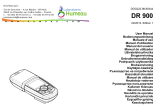 Hach LANGE DR 900 Benutzerhandbuch
Hach LANGE DR 900 Benutzerhandbuch
-
Hach TitraLab AT1222 Basic User Manual
-
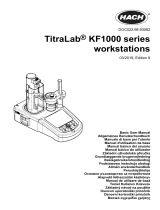 Hach TitraLab KF1000 Series Basic User Manual
Hach TitraLab KF1000 Series Basic User Manual
-
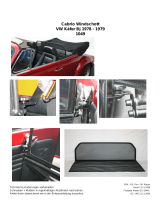 Weyer Windschott VW Käfer 68-79, Baujahr 1968-1979 Bedienungsanleitung
Weyer Windschott VW Käfer 68-79, Baujahr 1968-1979 Bedienungsanleitung
-
Brother P-touch RL-700S Benutzerhandbuch
-
Sokkia SDL1X Digital Level Bedienungsanleitung
-
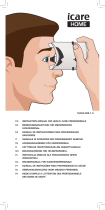 Icare Home Benutzerhandbuch
Icare Home Benutzerhandbuch
-
HEIDENHAIN ND 2100G - V2.59.0 Bedienungsanleitung
-
MSI G52-M7151X4 Bedienungsanleitung
-
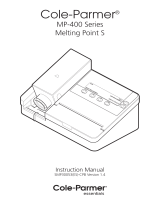 Cole-Parmer 03011-49 Benutzerhandbuch
Cole-Parmer 03011-49 Benutzerhandbuch






































































































































































